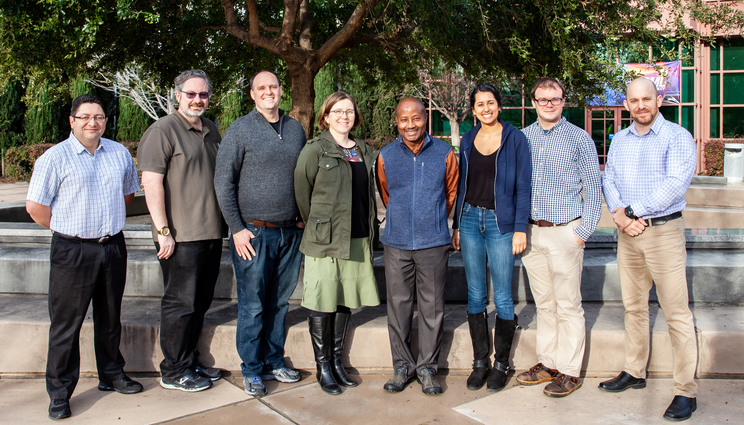Rare earths advance search for unified theory
 (Download Image)
Each of the National Ignition Facility’s 192 beamlines contains two large amplifier sections. The amplifiers are designed to efficiently provide 99.99 percent of NIF’s power and energy. Laser amplifier glass is doped with rare earth ions, which, new research shows, prevent external heat and noise from affecting the laser transitions.
(Download Image)
Each of the National Ignition Facility’s 192 beamlines contains two large amplifier sections. The amplifiers are designed to efficiently provide 99.99 percent of NIF’s power and energy. Laser amplifier glass is doped with rare earth ions, which, new research shows, prevent external heat and noise from affecting the laser transitions.
Rare earth elements are used in computer hard drives, electric motors and to generate and amplify the lasers at Lawrence Livermore’s National Ignition Facility (NIF). Future applications may include serving as memory for a quantum computer or the basis for ultrastable clocks.
In recent work by LLNL scientist Michael Hohensee and colleagues, the team shows that the properties that make rare earth elements so useful also make them great probes of physics beyond the Standard Model. (The Standard Model of particle physics is a theory concerning the electromagnetic, weak and strong nuclear interactions, as well as classifying all the subatomic particles known.)
The rare earths comprise 17 elements in the periodic table — scandium, yttrium and the 15 lanthanides (lanthanum, cerium, praseodymium, neodymium, promethium, samarium, europium, gadolinium, terbium, dysprosium, holmium, erbium, thulium, ytterbium and lutetium). Despite their name, the rare earths (with the exception of promethium) are not all that rare, but are found in relatively high concentrations across the globe. However, because of their geochemical properties, they seldom occur in easily exploitable deposits.
Rare earth elements are essential for American competitiveness in the clean energy industry because they are used in many devices important to a high-tech economy and national security, including computer components, high-power magnets, wind turbines, mobile phones, solar panels, superconductors, hybrid/electric vehicle batteries, LCD screens, night vision goggles, tunable microwave resonators — and, at the Laboratory, NIF's neodymium-glass laser amplifiers.
According to Hohensee, rare earths make great magnets in part because their valence electrons have more orbital angular momentum than other elements, and because other electrons form a shield around the valence electrons. This shield also helps make them good laser media, as it prevents external heat and noise from affecting the laser transitions, maintaining the rare earths’ unique properties when they are mixed (or doped) into a piece of glass or crystal.
"Thanks to both these properties, the electronic states of rare earths doped in a crystal make possible an electronic equivalent of the Michelson-Morley experiment that would be more sensitive than any other yet performed, helping to validate or rule out unified theories of gravity and particle physics," Hohensee said. The Michelson–Morley experiment forms one of the fundamental tests of special relativity theory.
Other collaborators include researchers from the School of Physics at the University of New South Wales in Australia.
The research will appear in a future edition of Physical Review Letters A.
Contact
 Anne M. Stark
Anne M. Stark
[email protected]
(925) 422-9799
Related Links
Physical Review Letters ADOE launches rare earth research hub
High-pressure studies of rare earth material could lead to lighter, cheaper magnets
Tags
Lasers and Optical S&TLasers
National Ignition Facility and Photon Science
Physical and Life Sciences
Featured Articles







